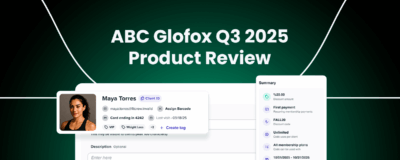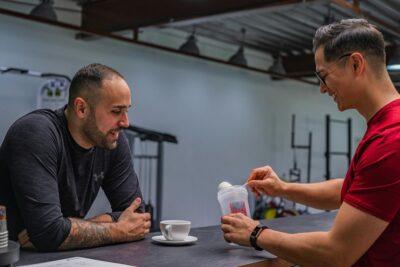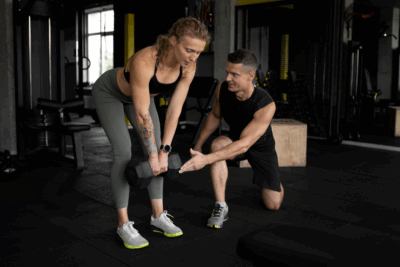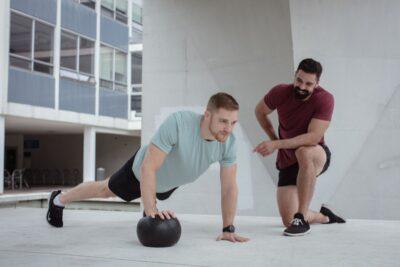In 2025, platforms like TikTok and Instagram are prioritizing local creator content in their “Nearby” feeds. That means a single reel filmed inside your gym by a fitness influencer now ranks higher than any polished ad you might run!
Most gym owners miss this because they think influencer marketing requires big names or massive budgets. It doesn’t. You need trust and relevance, and local creators have both.
In this article, we’ll guide you through the exact steps to do influencer marketing effectively, from identifying the right fitness influencers to the most used payment methods to tracking results, and leveraging a single post into a reusable asset.
Let’s break it down.
How Fitness Influencers Can Help You Grow Your Gym
Step #1: Understand the Role of Fitness Influencers
49.6% of brands now work with 1–5 influencers across tiers. Before you reach out, let’s get to know who’s who in the influencer landscape and why fitness influencers often outperform traditional ads in today’s trust-based market.
Types of Fitness Influencers
- Macro influencers
- 100K+ followers
- Reach millions, significantly amplifying brand visibility
- High cost but low engagement
- Better suited for national brands, not local gyms
- Micro influencers
- 10K–100K followers
- A balance of reach and engagement
- Perfect for gyms and fitness studios targeting specific groups within a broader market
- Known in your region, have niche credibility, and drive sales action
- Nano influencers
- 1K–10K followers
- Authenticity, high engagement, and cost-effectiveness
- Average engagement rate of 2.19%
- Better ROI and more persuasive recommendations
Why Fitness Influencers Drive Real Action
When someone sees a familiar face training in your gym and genuinely recommends it, it lands like a personal referral. That’s the power of the trust economy and why influencer marketing works. In fact, 82% of marketers say influencer campaigns drive higher-quality customers than other channels.
Overall, nano influencers deliver the best ROI per follower. Micro influencers strike the perfect balance of reach and engagement. Macro influencers bring mass visibility but often low interaction, and come with a bigger price tag.
The key is choosing the right tier for your gym’s goal.
Step #2: Define Your Goals and Budget
Before you reach out to anyone, you need clarity: what do you want this social media campaign to do? The answer shapes everything, from who you choose to how much you spend.
#1 Common Goals for Gyms and Studios
- Brand awareness: Get more people in your area to recognize your gym
- Member acquisition: Drive trial signups or class bookings with clear CTAs and referrals
- Program launches: Promote a new class, challenge, or personal training package with a time-sensitive push.
#2 One-Off vs. Long-Term Partnerships
One-off promos, like a single Reel or Story work for quick spikes, but long-term partnerships build trust and repeat exposure, crucial if your sales cycle isn’t instant. The best results usually come from multi-post collabs over 4–6 weeks.
#3 Budgeting & Compensation
You don’t need a massive ad budget to get started with influencer marketing, especially in the fitness space, where access to your gym or classes is often enough to spark interest.
According to Influencer Marketing Hub, here’s how most influencers get paid:
- 53% prefer a percentage of sales (affiliate-style)
- 21% accept product or service exchanges (like free membership)
- 19.6% charge flat rates
- 6.9% use tiered incentives
For gyms, this means you can structure deals based on performance, not just upfront costs. A free class pack, a unique referral code, or a small payout per signup can go a long way, especially with nano and micro influencers looking to build partnerships, not just collect fees.
Read more: How to make a gym profitable
Step #3: Find the Right Influencers for Your Brand
The right influencer doesn’t just have to look good in gymwear or have 10K+ followers. Their audience, personality, and content style has to match your gym’s brand and values.
If your gym promotes body positivity, look for creators who genuinely discuss it. If your gym is all about community and transformation, don’t bring in someone whose feed consists of just shirtless selfies and fitness modeling.
You’re looking for overlap between:
- What you offer
- What they do
- And who follows them
What Counts as Good Engagement?
According to the Sprout Social report, here are the influencer marketing benchmarks for the sports & fitness industry:
- Posts: 22.6 million
- Profiles (creators): 164K
- Average engagement rate: 1.6%
- Total engagements: 70.6 billion
- Earned Media Value (EMV): $153 billion
- Impressions: 604 billion
This positions Sports & Fitness among the top-performing industries in both total impact and ROI, especially considering its strong engagement rate and massive reach.
But remember, follower count means nothing if no one interacts. Here’s what typical engagement rates look like based on the influencer tier:
- Nano influencers (1K–10K followers): 3–6%
- Micro (10K–100K): 1.5–3%
- Macro (100K+): <1.5%
That doesn’t mean every person with X amount of followers will have that type of engagement. So beware of a huge discrepancy between follower count and engagement rates, aka likes and comments.
Local vs. National Influencers: What’s Better?
Local influencers work best when the goal of your gym or fitness studio is to get signups, class bookings, or foot traffic. Because a creator who lives 5km away and tags your gym feels authentic to nearby followers, they’re more likely to act.
But national influencers have their place, too! If you want brand awareness, to make noise around a new launch, or just to have people recognize your gym’s name, a bigger account can help, even if they’re not local.
Also worth noting: Many national influencers are still followed by locals. So if you’re the kind of gym locals are proud of, that exposure can still trickle down.
The best influencer marketing strategy is to use local creators for conversion. Use national ones for recognition, if the budget allows.
Read more: 9 Fitness Campaign Ideas To Inspire Your Own
Where to Find Fitness Influencers
To find fitness influencers, you can go manual or use tools. Most brands today use one of the following:
Manual Search (Free):
- TikTok + Instagram search: Try “[your city] + fitness / pilates / strength / yoga”
- Check who’s tagging local gyms, studios, or brands like Gymshark and TALA
- TikTok Creator Marketplace: Direct access to creators with built-in stats
Tools & Platforms:
- Heepsy: Good for sorting by engagement and brand fit
- Collabstr: Marketplace to hire creators for content or campaigns
Influencer Marketing Agencies
You can also hire an influencer marketing agency to do the legwork, negotiation, and tracking. But I’d only recommend that if you’re running a multi-location or franchise operation.
Step #4: Build a Win-Win Influencer Partnership
Fitness influencers deliver their experience to their audience. Their followers trust them because of consistency, personality, and credibility. So when you invite them to your gym, don’t just ask for a post. Offer them a real experience.
Let them get to know your space, your team, your energy. Talk about who you help. Let them feel what makes your gym different. That’s what they’ll pass on, and that’s what sells.
Even if it’s a one-off post, don’t treat it like a short-term transaction. Play the long game. Relationships are what turn small campaigns into long-term partnerships.
What to Say to Fitness Influencers (and How to Reach Out)
To contact your influencers of choice, use either:
- Instagram DMs: still the most direct and personal
- TikTok DMs: works if they’re active there, but responses are lower
- Email (from bio): often better for structured collabs or bigger creators
Keep your email or message short, personal, and clear.
Start by saying who you are, what your business is, and what you do.
Then explain why you’re reaching out; this can go in both the subject line and the message. Be upfront about what you’re looking for (a post, a story, a visit, etc.), and either share your budget or ask about their rates. Most influencers will let you know what they charge.
- Here’s a template:
Hey {Name},
I run {Your Gym} in {City}, where we focus on {type of training / who you serve}. I’ve been following your content and really like how you share your {energy / approach / style}.
I’d love to invite you in for a session. Just come experience the space and what we’re about. If it feels like a fit, we’d be open to a paid collab or content exchange.
Let me know if you’re interested, and I’ll send over the details!
{Your Name}
A quick note, even if they’re only doing one post, follow up after the experience. Thank them, reshare their content, or offer more guest passes.
Good influencer partnerships don’t just convert followers into members. They turn into brand advocates, future collaborators, and people who want your gym to succeed.
Step #5: Track Influencer Marketing ROI and Optimize
Once your influencer campaign is live, your job is far from done. Without tracking, you can’t know what’s working, what’s wasting money, or what’s worth scaling.
What Metrics Actually Matter
- Reach: How many people saw the content?
- Engagement: Comments, shares, saves, and overall interaction
- Conversions: Free trials, bookings, sign-ups
- Referrals: How many clients came from this influencer?
To make this trackable:
- Use UTM links to track clicks via Google Analytics
- Give each influencer a custom discount or referral code
- Tag them in your Customer Relationship Management (CRM) tool
This setup allows you to evaluate cost per conversion across campaigns, just like you would with ads.
Read more: Why Your Next CRM Should Be Your Member Management System
What Does It Cost to Convert?
Each influencer tier delivers a different mix of reach, engagement, and ROI. Here’s how they compare based on Later.com internal data:
Influencer Tier | Engagement Rate | Impression Rate | CPM (Cost per 1,000 Impressions) | CPE (Cost per Engagement) |
Nano | 6.15% | 34.13% | $5.25 | $1.12 |
Micro | 6.76% | 7.89% | $7.28 | $0.92 |
Mid | 3.14% | 7.84% | $10.47 | $1.03 |
Macro | 2.50% | 9.29% | $8.38 | $0.70 |
Mega | 1.83% | 15.51% | $7.64 | $0.49 |
The takeaway:
- Micro influencers strike the best balance for fitness brands, strong engagement at a reasonable cost
- Nano influencers are more expensive per engagement, but often convert better with local audiences
- Mega creators have wide reach and cheap cost-per-click, but far weaker engagement
What Works Best in Health & Wellness?
According to Later’s industry breakdown, health and wellness brands overwhelmingly prefer micro (63%) and mid-tier (22%) creators.
- Average impression rate: 51.6%
- Average engagement rate: 1.3%
This tells us that reach is high, but depth of interaction is harder to earn. That’s why your content format matters. The best-performing formats in this niche include:
- Day-in-the-life clips (e.g., “Follow me to this gym for my Monday lift”)
- Transformation journeys (e.g., before/after or long-term testimonials)
- Tips and routines (e.g., warmup flow, favorite gym hacks, etc.)
If you’re not sure what to ask for, start here. These formats are proven to drive curiosity and trust, and they work across TikTok, Reels, and YouTube Shorts.
Optimize Over Time
The goal isn’t to go viral, it’s to get consistent.
- Test creators across different tiers
- Compare the cost per trial or signup
- Double down on what’s working, repurpose high-performing content in ads, emails, and reels
Influencer marketing becomes powerful when it’s repeatable. Once you’ve tracked two or three campaigns, you’ll know exactly what to spend, what to ask for, and who brings in real clients, not just likes.
Read more: How to Build an Online Brand for Your Fitness Business
Conclusion
Influencer marketing isn’t just for big fitness brands; it’s one of the most accessible, high-impact strategies local gyms can use to grow in 2025. The right fitness influencer brings trust, community, and real people through your doors.
That’s why it’s something you should consider regardless of the size of your gym or fitness studio. Contact those local influencers and invite them into your space. When the invitation and partnership are genuine, people will notice, and that will grow your business.
Ready to make it part of your growth engine?
Book a free demo with Glofox and see how to turn influencer buzz into a streamlined, trackable system that brings in members and keeps them.














